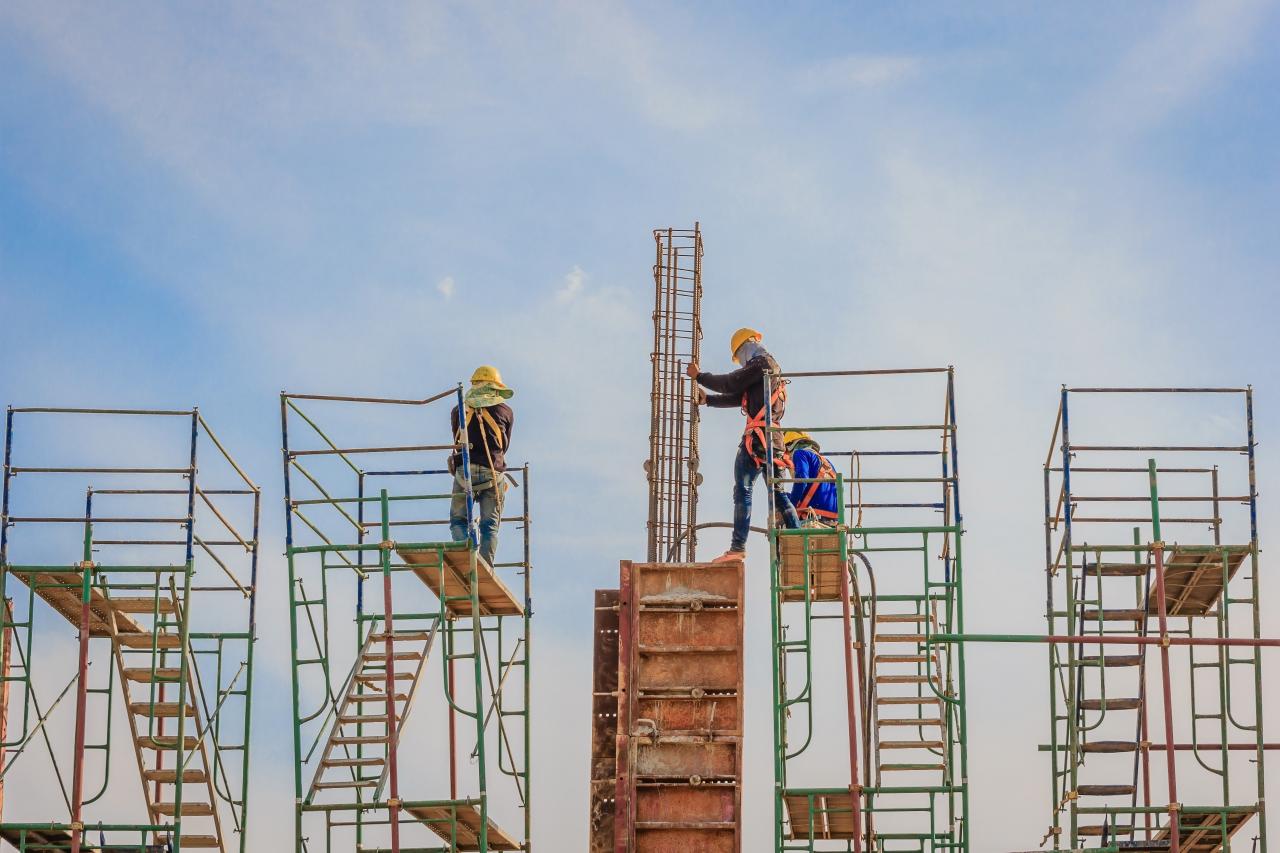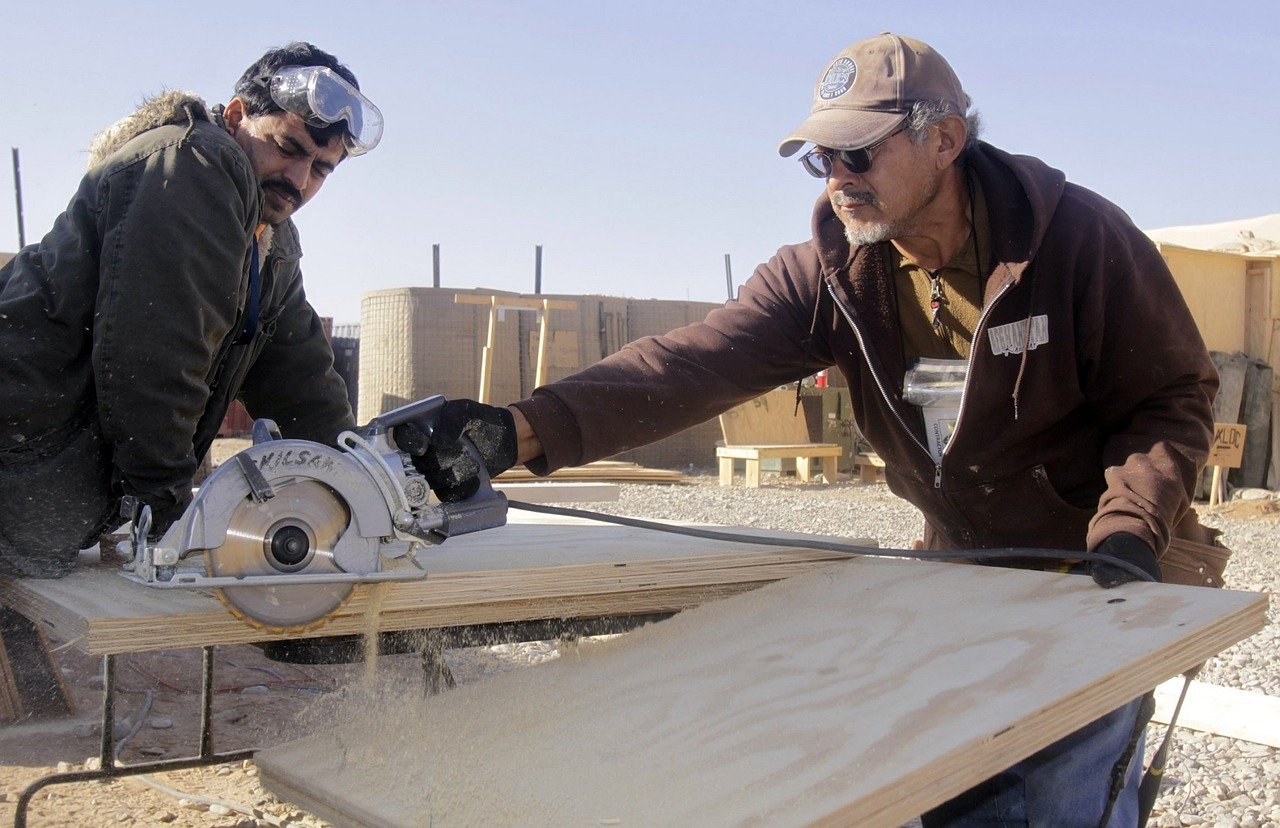When funding is available in the government’s infrastructure budget, they will make a press release with various resources or announce for a “call for bids.” Part of the process at the beginning of any project needing quality work conducted is the need for estimations or bids.
Thus, “Buyers” or “Customers” will make a call to action because of the resulting factors. Hence, the targeted audience is the small or large business owners of construction companies. As well as real estate investors who buy houses in foreclosure with the purpose of fixing them up and selling for a profit.
3 types of RF
The main purpose of the 3 types of documents which request for information (ie. quotes, proposals, bids,…) from companies and business people are the results that can be fulfilled by each bidder. Here are the most 3 common documents.
- RFQ – Request for Qualifications
- RFI – Request for Informations
- RFP – Request for Proposals
These are the requested documents most common in the construction industry and the projects funded by government bonds and other forms of monies. In other words, they’re designed to extract the subcontractors, vendors, and suppliers qualifications, work history, personnel, equipment, certifications, etc.
The most common one is the Request for Proposals. Additionally, it can be an “open bid” or an “invitation only” bid from companies which are probably favored by the “Buyer” or “Customer.”

In fact, with this breakdown and contract terms, you’ll know what is involved when formatting them and how to present them to the buyer. General contractors are the primary bidders in the construction industry, but what’s more common are the subs, vendors, and suppliers who want to win a bid “with these general contractors.”
Therefore, if you’re a small business owner and feel you’re more than qualified to work the tasks needed to complete a certain job, then a proposal should be created for your company.
What is an RFP in construction?
Therefore, the requests are to get the best buy or value. The most popular request is the aim to get a “Request for Proposals” (RFPs) (a.k.a. RFBs, request for bids…). It’s the final phase of documentation needed for a pre-construction development meeting and/or project. In addition, it’s the most lucrative part of the bidding process for the construction industry players.
For example, in the construction field, there may be more than 100 maintenance and construction companies around a certain region. They may all be considered general contractors with subcontractors working for them, but they are the “umbrella” company who will be submitting a bid for a multimillion construction renovation project in that region. The bidding process is the outline of the entire project.
It will show exactly what is needed for the project including all costs, materials and labor figures. A good response for the RFPs is having all the equipment, manpower, submittals and materials costs/estimates, and insurance. This is only to name a few elements of a good response to them. Other important elements are the credentials, experience, and knowledge to solve the problem or issue the customer has.
The steps to a successful RFP in construction
Here are a few easy steps to be successful in submitting a winning RFP.
1. The company bidding should “ultimately” know what they are presently working on and what they are capable of working on in future projects. When answering an RFP, attaching a proven past-performance page and capabilities page at the beginning of the proposal is a must. It’s the outline of specific details.
- past work performance
- start/finish dates
- subcontractors list and contact info.
- references/bank references
- prices/estimates of submittals or materials/labor
- type of equipment owned (or capable of leasing with companies names)
- all necessary documentation (i.e. legal docs, certifications, permits, licenses, credentials, insurance/bonds…).
2. Before submitting an RFP, companies bidding must visualize “how the winning bid” will look overall. Quality of work is great, and almost all of the bidders will attempt the lowest bid, including the “quick-turnaround, best quality, and value.
For those who are the ones requesting the bids, it helps to have everything organized according to the subject matter. For instance, if there is technology involved, computers and equipment may be one subcontractor’s work so the general contractor may need to submit one page dedicated to that section of the proposal.
Find here: The 7 samurais of construction
They may have the type of equipment, software, and other technological components this part of the construction project may need. Hiring a subcontractor is what a general contractor ultimately needs if it’s one of the line items in the RFP.
This is why it’s important for an RFP to be detailed and organized so the bidders know exactly what is needed. In general, the RFP may have timelines, brands/manufacturers, specific types of work or tasks and so on.

3. The INTRO is the simple part in the RFP because it has the direct issues or problems the company who is requesting for a bid want from the responders.
Actually, what they want and need to be done to solve or fix their needs and wants will be highlighted and itemized in the RFP specifications in detail; or it should be.
4. All the requirements and the criteria sections for the RFP normally show “how the winning bid” will be selected. Naturally, it’s from the responder’s capabilities, experience, financial management, and overall presentation of their services and goods. There are actualities and specifications for these bids.
5. Due dates and time management are important in the RFPs. Therefore, being direct on how important the timeline or work schedule in the proposal is critical to the selection.
6. The RFP and it’s tasks or “punch-list” are all going to be different in scope and work since every job or work project is different. In general, electrical work, for instance, may be similar technicalities, but the electrical design components will be different in every job. Ideally, this is what makes a ‘rookie’ from the experts.
The most common RFP traits
Once all bids are received before the due date, and with the final mailing postage time stamped, they are reviewed and narrowed down to a selected few. Some responders may be too general in an RFP; alternatively, they also can be too specific. Either one can “throw-off” an entire chance for a company requesting bids to be selected.
Thus, a winning bid “hits every task or problem” the company requesting for bids want and need, but at a reasonable cost and best-value in mind.
Nevertheless, when a company writes a draft RFP, bidders may have a chance to review it. As a result, this is the perfect opportunity for questions/answers to be addressed.
Dos and don’ts of the Construction RFP
The organization, requirements, and stakeholders in each construction project are developed with dignity. Actually, every RFP should clarify in detailed fashion what they expect from the bidders. Respondents may have questions regarding specifics of the project. For instance, does the “floor’s materials” need to be from a specific region, brand, manufacturers…etc.?
“What about the types, styles, and other materials being used with it, such as the grout? Do they, too, need to be from a certain region, brand, or manufacturer?”
These are what will be seen in a detailed RFP. Now, know when and how to ask the requester is the trick. Here are the do’s and don’ts of a typical RFP. Because of specifics like this, clarity is key, and so is dollar amount being estimated. It also gives a better understanding and insight into the needs of the project.
DO’s
Establish expectations
When an RFP is not clear to its specifications or requirements in general, confusion can form into chaos. Let there be “No unclear expectations.” Additionally, an RFP will suggest a certain outline needed within the layout of the RFP itself. It also helps differentiate bidders.
Qualifications and estimations
When a good RFP is submitted to the company requesting for bids, the job scope should be clearly defined. The cost estimations and qualifications is a must; therefore, meetings are normally held for this. There are “hard and soft” costs to the bid process. It’s crucial so a job doesn’t go past budgets in various sections of the RFP.
Schedule
Collaboration and communication will keep things on schedule. The entire team will be worthy of it because, during construction (and when least expected), something can go wrong. A pipe bursts that was recently put in, electrical outage when the electrician leaves…and so, it is up to the team to come together and help one another get through these schedule blockers. Its when a team’s effort shines.
And with this optimal peak-performance, it becomes the turn-key to top scheduling performance. Although, it takes committing to the collaborating schedules of all everyone, along with good communication skills. Hence, all subcontractors, suppliers, vendors, and staff need to be focused on the “scope and work” of their RFP submissions.
At any rate, setting goals, realistically, and dates for completion by everyone involved in the job is a continuous team effort.
Flexibility
While the RFP becomes a focal point, it’s also a bargaining match with the buyer and seller. Flexible with one another in terms, agreements, estimations, and other facets of the contractor job are important too. In other words, agreeing to terms from both sides works easiest thereby allowing everyone to be successful before and after the contract work is completed.
DON’TS
Never assume
As the old saying goes, “never assume.” When an RFP is released, don’t ever assume the expectations of the respondents will be made. They have to do this themselves!
Ignore feedback
It’s given that in a competitive bid process everyone is “on their toes.” Valuable information and data may be withheld by all involved in the bidding. Improving ties with one another is going to be determined by the communication efforts with both sides of the RFP spectrum.

Unrealistic deadlines
Do not set an unrealistic deadline! To receive a quality RFP, deadlines should be set according to the complexity of the terms in the RFP. Evaluating all responses will take time so its easier when allowed adequate time for the best quality outcome.
What is a request for information (RFI) in Construction?
Consider all documents to have some type of gap or conflict which may be addressed in the RFI process. Need for other corrections within the RFI is best “tackled” months before launching the work schedules to everyone involved.
An RFI is a formal document for requesting information on various topics. In most cases, subcontractors are asking the General Contractor for the subcontractors work specifications’ details (it’s also one of the ways you’ll catch a mistake in the RFP).
Read also: 10 tips for delivering construction projects on time and on budget
The RFI is utilized by clients to gather specifications before the bidding process. Various businesses and companies may request either. (This is also a way to find out how much the bidders know.
Construction RFIs are commonly the most asked for by small businesses, especially in the quality control department. The quality of the construction development process is due to these important documents.
RFQ or Request for Quotation
A Request for Quotation is estimates or quotes in writing on what the services, work performance and goods that will be part of the project up for bids. They’re detailed and have main features. In its entirety, they must be submitted with materials or samples of previous work with financial proof. The package for the quote should be itemized so all items included are given attention to. This is a core part of the RFP.
Differences in all three documents
RFP, RFI, and RFQs are complex documents to those who never have written any of them. Their differences are practical for the average business or company who wants to sell to the procurement department of various agencies, local, state, or federal government initiatives.
RFPs is the major “Request for…” in the hiring phase of a construction job. Hiring experienced and qualified companies to work for specific jobs or projects is the aim. These jobs involve multiple tasks and skills to complete so by the technical proposals as the tool to search for the right companies, an RFP or Request for Proposal becomes the linking tool for suppliers, business owners, government agencies, and vendors.
RFQ is ideal for the potential suppliers and vendors who want to be part of a contract needing their goods or supplies. For instance, the prospective vendor may be needed to supply 100 vending machines on a local air base governed by the government. A quote is needed to fulfill the total cost of services by the responder when writing up the RFP.

RFI is ideal for the questions and answers needed to solve the issue or problem stated on the RFP. For instance, a question could be asked, “How long are these vending machines needed or will they not be purchased but leased?”
Resolving the “gaps, conflicts,…ambiguities,” as the bidding process develops, costs can change; this is why it’s important to keep alert when RFIs are submitted and answered. This also acts as a tool that benefits both customers and seller. Thus, each one is ultimately used for the preconstruction phase of a project.
Finally, with these 3 main documents that play a part of a contractors bidding process, it’s wise to keep track of your competitors too. You’ll learn from them as they will learn from you. Good sportsmanship plays a huge role in contracting and so everything goes smoothly from beginning to ending of project completion.
Author Bio: David Freudenberg is a real estate investor that buys single family, multi-family, fix/flips, and rental properties in the Sunshine State of Florida. He enjoys writing about real estate investing and investing in tax strategies on his blog at davidbuyshousesflorida.com






